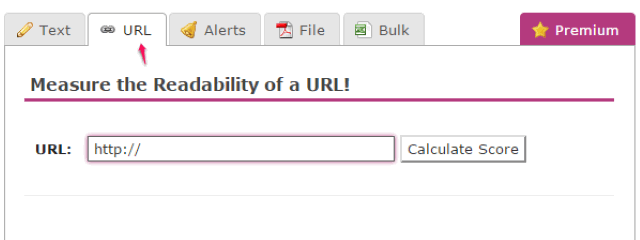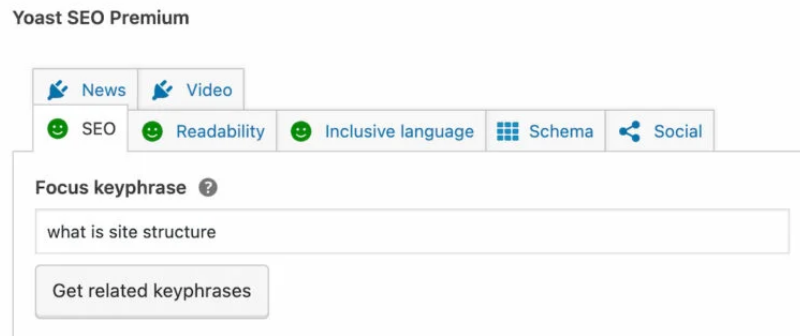Ever wondered why some blog posts are a breeze to read while others feel like deciphering an ancient script? 😛
It’s all about readability.
Dive into this post to discover how to make your content effortlessly readable and watch your SEO rankings soar.
Put simply, Readability is a measure of how enjoyable and easy your blog post is to read. It’s not just about using simple language or short sentences.
It’s about creating content that your audience can digest easily, without getting overwhelmed or bored.
In every niche, updating and optimizing old content for better readability is important.
In this blog post, we will discuss how to optimize your existing content for better readability using various techniques and tools.
Readability and SEO
Importance of readability in SEO
While readability might not be a direct ranking factor in Google’s algorithm, it plays a significant role in SEO indirectly. High readability leads to a better user experience, which can increase the average page visit duration. When visitors spend more time on your page, it signals to Google that your content is valuable, potentially leading to higher search rankings.
Moreover, content that is easy to read and understand is more likely to be shared, linked to, and referenced, all of which can boost your SEO performance.
Google’s recommendations
Google’s guidelines emphasize the importance of creating content that is useful, informative, and engaging. While they don’t explicitly mention readability, it’s clear that readable content aligns with these guidelines.
In fact, several Google research papers and patents suggest that they consider readability when evaluating the quality of a webpage.
For instance, Google’s patent on “Document Scoring Based on Document Content Update implies that updating and improving content (which includes enhancing readability) can positively impact its ranking.
Improving the readability of your content can lead to an increase in organic traffic. When your content is easy to read, visitors are more likely to stay on your page longer, reducing your bounce rate. This can lead to higher rankings in search engine results, driving more organic traffic to your site.
Flesch-Kincaid readability level
👉 Flesch-Kincaid Readability Level vs. Readability Ease (different metrics): Readability level measures text difficulty based on sentence length and syllable count, while readability ease measures how easy it is to understand on a scale from 0 to 100, based on sentence length, word length, and syllables. Both metrics evaluate readability but use different formulas and scales.
Explanation of Flesch-Kincaid readability level
The Flesch-Kincaid readability level is a widely used standard for assessing the readability of English text.
There are a dozen of readability measures; the Flesch-Kincaid Readability level is the most accurate one. It takes all the factors that affect readability while calculating.
You can easily check the readability levels of your blog posts using this tool. There are dozens of other tools!

It’s calculated based on two factors:
- The average sentence length (the number of words divided by the number of sentences).
- The average number of syllables per word.
The formula is as follows:
206.835 - 1.015 * (total words / total sentences) - 84.6 * (total syllables / total words)
A lower average sentence length and a lower average number of syllables per word both contribute to a higher Flesch-Kincaid readability score, indicating that the text is easier to read.
This highlights the importance of using shorter sentences and simpler words in your content.
How to check Flesch-Kincaid readability on WordPress?


There are several tools available to check the Flesch-Kincaid readability level of your content. If you’re using WordPress, SEO plugins like Yoast SEO and Rank Math can display the readability score as you write your blog posts.
There are also browser extensions and online tools that can analyze the readability of your content.

For instance, the Hemingway App not only provides a readability score but also highlights complex sentences and suggests improvements. Google Docs also has a feature to check readability under the “Tools” menu.
Ideal readability scores
A Flesch-Kincaid readability score of 60.0–70.0 or above is generally considered desirable for most content.
This range indicates that the text is fairly easy to read and should be understandable to a wide audience.
The ideal readability level can vary depending on your niche. For instance, if you’re writing for a highly technical or academic audience, a lower readability score might be acceptable because your readers are likely accustomed to complex language.
On the other hand, if you’re writing for a general audience, you should aim for a higher readability score to ensure that your content is accessible to as many people as possible.
Understanding your audience and their reading preferences is crucial in determining the optimal readability level for your content.
Other formulas
While the Flesch-Kincaid readability level is a popular choice, there are several other readability formulas that you might find useful.
Each of these formulas offers a unique perspective on readability:
- Gunning Fog estimates the years of formal education a person needs to understand the text on the first reading. Learn more
- Dale Chall uses a list of 3000 words that fourth-grade American students can understand to assess readability. Learn more
- Fry plots sentence length and syllables on a graph to estimate the grade level of the text. Learn more
- Smog estimates the years of education a person needs to understand a piece of writing. Learn more
- Automated Readability Index uses characters per word instead of syllables, making it more suitable for languages other than English. Learn more
- Coleman-Liau relies on characters per word rather than syllables, making it more accurate for texts with shorter words. Learn more
Regardless of the formula you choose, the goal is to create content that is easily understandable and engaging for your specific audience.
By understanding and applying these formulas, you can enhance the readability of your content, making it more accessible and enjoyable for your readers.
How to write blog posts with high readability scores?
Creating content with high readability doesn’t have to be a daunting task.
With a few simple tips and techniques, you can make your blog posts more engaging and easier to read.
Here are some actionable guidelines to help you simplify your writing style and improve your readability scores:
Use alternative words
English is a rich language with a plethora of synonyms. Don’t hesitate to replace complex words with simpler alternatives.
For instance, use “help” instead of “facilitate” or “start” instead of “initiate”.
This not only makes your content easier to read but also makes it more relatable to a wider audience.
There are several apps available for Mac and Windows that can provide synonyms on the fly, such as Synonymful. You can also use Power Thesaurus.
These tools can help you quickly find simpler alternatives to complex words, making your content more relatable and easier to read.
Use short sentences
Short sentences are easier to read and understand. Aim for an average sentence length of 15 to 20 words.
Remember, it’s not about dumbing down your content but about making it accessible and enjoyable for your readers.
Tools
Here are some tools that can help you improve the readability of your content:
- Grammarly: This is a comprehensive writing tool that checks for grammatical errors, punctuation, and spelling. It also provides readability scores and suggestions to improve your writing style.
- Wordtune: This AI-powered writing tool helps you simplify complex sentences and find alternative words to make your writing more clear, compelling and authentic.
- Hemingway: Named after the famous author known for his concise writing style, the Hemingway app highlights complex sentences, adverbs, and passive voice in your text. It also provides a readability score and suggestions to improve your writing.
- ChatGPT: OpenAI’s language model, ChatGPT, can be used to improve the readability of your content. Simply provide a prompt, such as “Make this paragraph easier to read,” and ChatGPT will generate a more readable version of your text.
By using these tools in conjunction with the tips and techniques we’ve shared, you can significantly enhance the readability of your blog posts.
Format your blog posts for skimmers
While it’s important to aim for readability in your writing, don’t sacrifice engaging and conversational language in the process.
Write as if you’re having a conversation with a friend, using a friendly and approachable tone.
Incorporate words like “you” and “I” to create a sense of connection with your readers.
Remember, your goal is not just to make your content easy to read but also to make it enjoyable and engaging.
- Typography: Choose an easy-to-read font and set it at a comfortable size. Ensure there is enough contrast between the text and background, and use line spacing and margins.
- Proper Formatting and Hierarchy: Use headings, subheadings, bullet points, and numbered lists to structure your content and make it easier to navigate. Highlight key points using bold or italics, but avoid overusing these elements.
- Images: Use images sparingly and only when they add value. Add alt text to your images for accessibility and SEO.
- Transition Words: Use transition words like “however,” “in addition,” “therefore,” and “for example” to guide your readers through your content and help them understand the relationship between your ideas.
- Active Voice: Use active voice as much as possible to make your sentences more direct, clear, and concise.
Conclusion
Improving the readability of your blog posts isn’t just about making your content easier to read. It’s about enhancing the user experience, boosting your SEO performance, and, ultimately, driving more organic traffic to your site.
Editing and optimizing your existing posts for better readability can breathe new life into your content, making it more engaging and valuable for your readers.
It’s a continuous process that requires practice and patience, but the rewards are well worth the effort.
Remember, readability isn’t just about using simple language or short sentences. It’s about understanding your audience and creating content that resonates with them. It’s about making your content accessible, enjoyable, and engaging.
So, what do you think about improving readability? Do you have any tips or tricks you’d like to share? We’d love to hear from you. Leave a comment below, and let’s continue the conversation.
Thanks for reading, and here’s to creating content that your audience will love!




